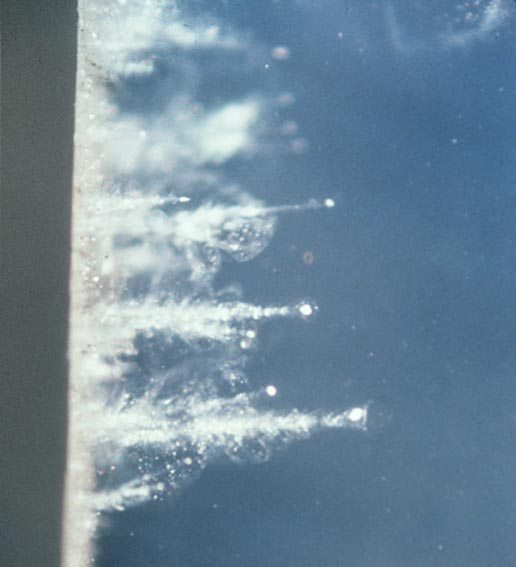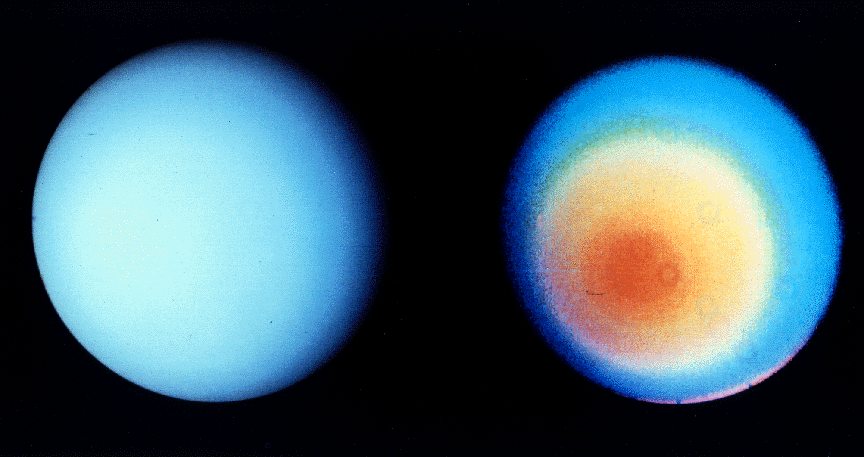Since
the dawn of time, humans have naturally looked into the sky and wanted
to explore it. But, due to modern technology, we are able to investigate
planets that are in our solar system and beyond. From the Voyager 1 to
the pioneer missions and even future missions to Mercury, we now are
able to better understand of our neighbors. So far, we have been able to
explore all the planets in our solar system but I will only focus on Venus,
Mercury, Uranus, Jupiter, Saturn and smaller celestial bodies like
comets and asteroids.
This is a diagram of every single mission to space, including all of the space agencies. But once again, this blog is about Venus,
Mercury, Uranus, Jupiter, comets and asteroids.
http://www.photosfan.com/images/history-of-space-missions1.jpg
https://www.youtube.com/watch?v=nAPDnQ5aZ6E
This link directs you to an inspirational video by NASA about why we explore.
Venus
- The first successful mission to study Venus was the U.S Mariner 2 in
1962 with a flyby. The results were that Venus has cool clouds and an
extremely hot surface. This probe also reported back that the
temperature reached 262 °C and pressure increased to almost 22
atmospheric units, the atmosphere composition is 90–93% carbon dioxide,
0.4–0.8% oxygen, 7% nitrogen and 0.1–1.6% water vapor. Also, as you
might have guessed, there have been a total of 42 missions to Venus
(failed and successful). 40 of them have been U.S.S.R and NASA missions.
Due to the incredibly high surface temperatures and the dense
atmosphere, there are no plans for human colonization or rover missions.
But, future missions are planning to track the weather patterns and
electrical and acoustic activity from the planet.
This is a picture of the Mariner 2 during inspection before the launch. The scientists are unfloding the solar panels in order to see if they work.
http://upload.wikimedia.org/wikipedia/commons/c/c9/Mariner_2_inspection_2.jpg
Mercury
- Mercury is the least explored planet out of the inner planets. There
have only been two missions to the Mercury. The reason why very few
space agencies choose Mercury to explore is because of its close
proximity to the Sun, the fact that it does not have an atmosphere, the
high temperatures, and its slow tilt spin. All these factors make it
incredibly hard to land on the surface and even orbiting the planet for
that matter. To orbit Mercury, you have to get to orbital velocity near
the planet, but once you slow down and get near the planet, the Sun’s
gravity just pulls you to the Sun. Also, since Mercury does not have an
atmosphere, conventional landing techniques (parachutes) do not work.
So
how did the Messenger (2004) get data from Mercury? It used gravity
assists. The spacecrafts used a strategy designed by Chen-wan Yen in
1985. Yen proposed that you can use regular rockets with consecutive
gravity assist, 'swingby' moves around Venus and Mercury. Also
inexpensive propulsive trajectory boosters can be used to save money and speed to get to Mercury. Messenger had
successful flybys of Mercury. It was able to map out all of Mercury’s
surface, the composition, the age, the surprisingly similar magnetic
field compared to Earth’s and the possibility that there might be water
ice on Mercury. Since the Sun was quite close, Messenger got its power
from two large solar panels on both either sides. The Sun is so close to
Mercury,that it is 11 times brighter at Mercury than at Earth and
temperatures are constantly 840°F. The probe has to have a ceramic heat
resistant cloth so that it can operate at room temperature.
This is a picture that Messenger took of Mercury during its flyby. It shows each side of the planet. http://i.space.com/images/i/000/026/586/iFF/mercury-glob-map-meessenger.jpg?1361965547
This is a diagram of Messenger's mission to Mercury.
http://thumbnails.visually.netdna-cdn.com/messengers-mission-to-mercury_502917dc6fd37.jpg
Comets
- Stardust was a NASA robotic mission to collect and bring back dust
particles from the comet wild 2. The capsule returned to Earth in 2006
and scientists started to examine the particles. Once they ran their
tests, they were quite surprised by the composition of the comet. Their
previous records suggested that the comet formed a little below absolute
freezing, in accordance with the ice. But the findings contradicts
that, the rock formation was actually formed very close to the Sun
(where it is hot enough to evaporate bricks). This extremely hot rock
formation then travels beyond Neptune, where it then got the ice.
This is a picture of visable dust particles form the comet wild 2 that was trapped in the Aerogel.
http://upload.wikimedia.org/wikipedia/commons/9/90/Aerogel_labtest.jpg
Essentially,
a comet is the product of fire and ice. Also, as Stardust was circling
the comet Wild 2 and taking pictures to be sent back to the ground,
them team noticed that Wild 2 is one of the most fascinating comets they
have ever seen. The team saw kilometer-sized deep holes surrounded by
vertical and even overhanging cliffs. Flat topped hills surrounded by
cliffs with some spiky pinnacles hundreds of meters tall with some vent
systems spewing gases out. They also saw dust evacuating from a vent on
the comet’s night side, a part of the comet that scientist did not
think could be active because of the lack of sunlight. Sadly, the team
did not see evidence of craters like on the moon. This leads the team to
suggest that the comet is new and the old cratered surface is gone.
Asteroids
- The Dawn mission by NASA launched in 2007 was to rendezvous and
orbit the asteroids 1 ceres and 4 vesta. The mission was also organized
to study the internal structure, density, shape, size, composition and
mass of the asteroids in the hope of getting data on the surface,
cratering, and magnetism. These findings will help determine the
origins of the asteroid how they formed, the core size and how water
plays a role in making an asteroid. This was a very monumental mission
because it was one of the first missions for us humans to learn more
about our smallest neighbors, and where they might of come from. Dawn
got its power from solar panels in order to operate the framing
cameras, visual and infrared spectrometer meters, Gamma ray and neutron
detector as well as its xenon ion thrusters for navigation.

This is a diagram of Dawn. As you can see, there are two solar panels and some scientific instruments. http://spaceflightnow.com/delta/d327/images/070702dawn.jpg
Jupiter
- Juno is a NASA space mission designed to orbit Jupiter. It was
launched in 2011 and is about to make a Earth gravity assist. The main
purposes of this mission is to measure the gravity and magnetic fields,
atmospheric condition, composition, and the relationship between the
interior, atmosphere and magnetosphere. On board of the spacecraft,
there are 29 sensors that feed data into nine instruments. There is even
a camera to take pictures along the journey. So far, the spacecraft it
almost 1/2 through its journey and is expected to orbit Jupiter in the
year 2016. Power- This is the first spacecraft to be using solar panels
so far away from the Sun. Since it is so far away, the craft requires 11
large panels that will need to generate 405 watts of electricity. This
is not a lot of electricity, barely enough to start a hair blower. Of
those 405 watts, half of them are being used to keep the craft warm and
the other half is being used to operate the instruments.
This is a north pole view of Jupiter taken by Juno. You can see the cloud ringsaround the planet from this incredible view.
http://juno.wisc.edu/Images/using/Instruments/JCM/Jupiter_northpole_link.jpg
Saturn
- The two Voyager missions flew by the planet Saturn in November 1980
and August 1981. These crafts were designed to study the composition
(97% Hydrogen, 3% helium), density (687.00 kg/m³), temperature (-113 to
18 degrees fahrenheit), and winds of the atmosphere. What they found was
startling, the winds at the equator are constantly 1,100 mph in a
eastern direction. Also, the eastward jet streams indicates that are not
only in the thick cloud layer, but also extend inward at least 1,200
miles below the clouds. Each spacecraft measured the length of day on
Saturn to be 10 hours, 39 minutes, 24 seconds. These were the first
things to take high resolution pictures of Saturn and reveal details
that we were not able to see on the ground in Earth.
This picture of Saturn was taken by Voyager 2.
http://voyager.jpl.nasa.gov/image/images/saturn/saturn.gif
Uranus
- The only man made thing to ever reach Uranus was the Voyager 2. The
Voyager 2 was a probe that also flew by Jupiter and Saturn. On the flyby
of Uranus though, it recorded data of 10 newly discovered moons, as
well as, two newly detected rings. The instruments onboard Voyager 2
also showed that Uranus has a very large and unusual magnetosphere. The
magnetosphere does not go through the exact center of the planet and is
tilted 59° relative to the axis of rotation. This is peculiar because
all the other observable planets have their magnetosphere in line with
the axis of rotation and it goes through the exact center. One
hypothesis to explain peculiarity is that there is an underground sea
of liquid diamond that throws off the magnetic field.
This is a picture of Uranus taken by Voyager 2. The left picture consists of blue, green,
and orange, filters, processed as how the eye might see it. The right photo is a picture with
ultraviolet, violet, and orange filters. http://nssdc.gsfc.nasa.gov/imgcat/hires/vg2_p29478.gif
ultraviolet, violet, and orange filters. http://nssdc.gsfc.nasa.gov/imgcat/hires/vg2_p29478.gif









No comments:
Post a Comment
Note: Only a member of this blog may post a comment.